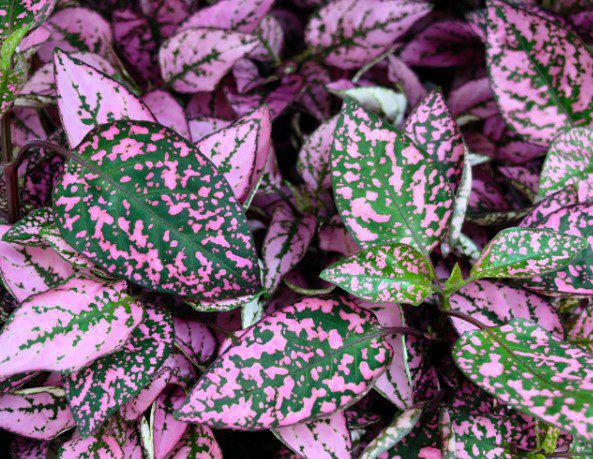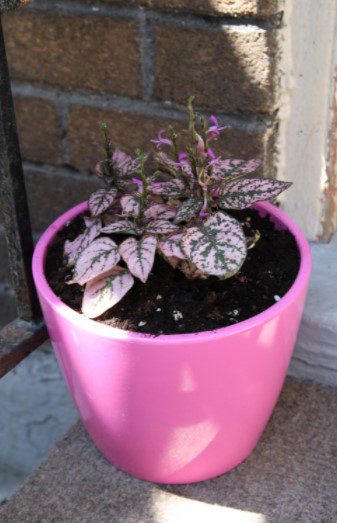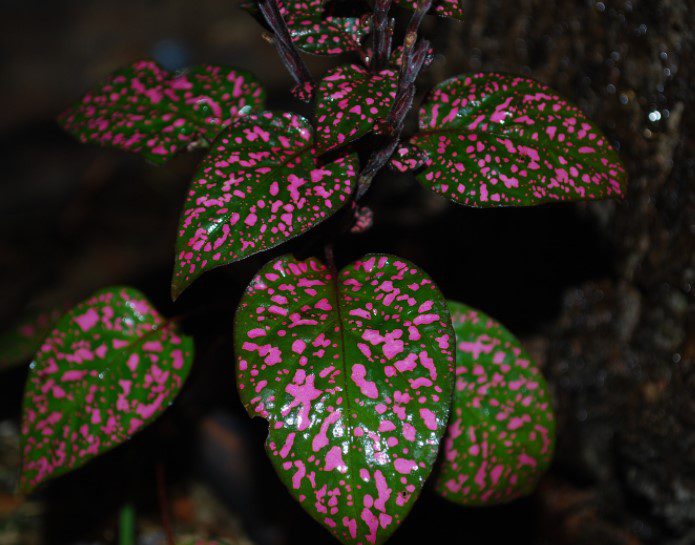Polka Dot Plant
This is the correct time of the year when many gardeners seek a new houseplant to cheer them, and a fine example is the inexpensive but charming Polka Dot Plant.
Also called the Freckle Face Plant, Pink Dot, and even the Flamingo Plant, its Latin name is Hypoestes. That is from the Greek word “hypo,” meaning “under” and “estia,” meaning “house,” a picturesque reference to the way the floral calyces are covered by bracts.
The Polka Dot Plant is enticing because of its boldly patterned and variegated foliage. It is accessible in various patterns and sizes and shades of pink, red, and white. This plant can actually grow quite large in the perfect climate, but the ones we keep as houseplants stay smaller.
If you plan to get your kids interested in gardening, this is a perfect plant to start with since it is effortless to grow and very forgiving of the occasional forgetfulness.
All it needs is a bright location with some direct sunlight to maintain its vivid color. In the hot summer, filter the light a bit, however, as it does not like intense heat.
The soil-less mixture should be kept evenly moist from spring to fall and watered less in winter. Mist the leaves frequently in a room with average warmth.
It would be best if you didn’t let this plant sit in a room that gets colder than 13 degrees Celsius (55 degrees Fahrenheit).
Sometimes people ask me what happened to the leaves of this lovely plant. When they purchased it, they were covered with splashes of pink, but over the next few weeks, the leaves reverted to just plain green.
If that has happened to your Polka Dot Plant, it is not getting enough light. If you don’t rectify the problem, the plant will become very straggly and unpleasant.
By the way, if your plant is still splashed with pink but is getting very leggy, it is also not getting adequate light.
You should report your Polka Dot Plant each spring.

Polka Dot Plant Details
Scientific name: Hypoestes, phyllostachya.
The growth habit of an evergreen perennial that can grow upright or rounded to 18 inches in height and as much width.
They are oval and deep green, with spotted or blotched white, pink, or red markings. They can propagate up to 3 inches in length and half the width.
Light: Can tolerate full sun or shade. The best conditions for growth are in filtered sunlight, where the leaves develop their best colors.
Water needs: Prefers moist soil. Container plantings should be watered when the soil starts to dry. This could happen daily in hot and dry weather. In-ground plantings should be watered every three to four days in dry conditions. Feedings You can also substitute slow-release fertilizers.
Propagation: From cuttings and seeds. Culture is easy; good displays require spring-through fall weather.
Hardiness: Protect from freezes and frosts with tenderness
Major problems: Plant in well-drained soil to avoid root rot. Aphids, whiteflies, and mealybugs can occasionally be a problem and can usually be controlled by insecticidal soap sprays.
Pruning is important because plants can quickly become sloppy and out of control. To keep your plants neat, you should periodically pinch the tops off and remove any old stalks.
Uses: Polka dots plants are popular for their colorful leaves, making them a great accent to flower beds and container gardens. You can use one variety of a variety or mix several leaf types to make eye-catching combinations.

Spikelike stems produce small pink and blue flowers. Indoor plants can be used in brighter areas.
Local plants are often treated as annuals, and they are removed when the cold weather causes them to decline.
Madagascar native.























